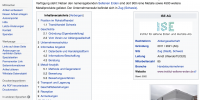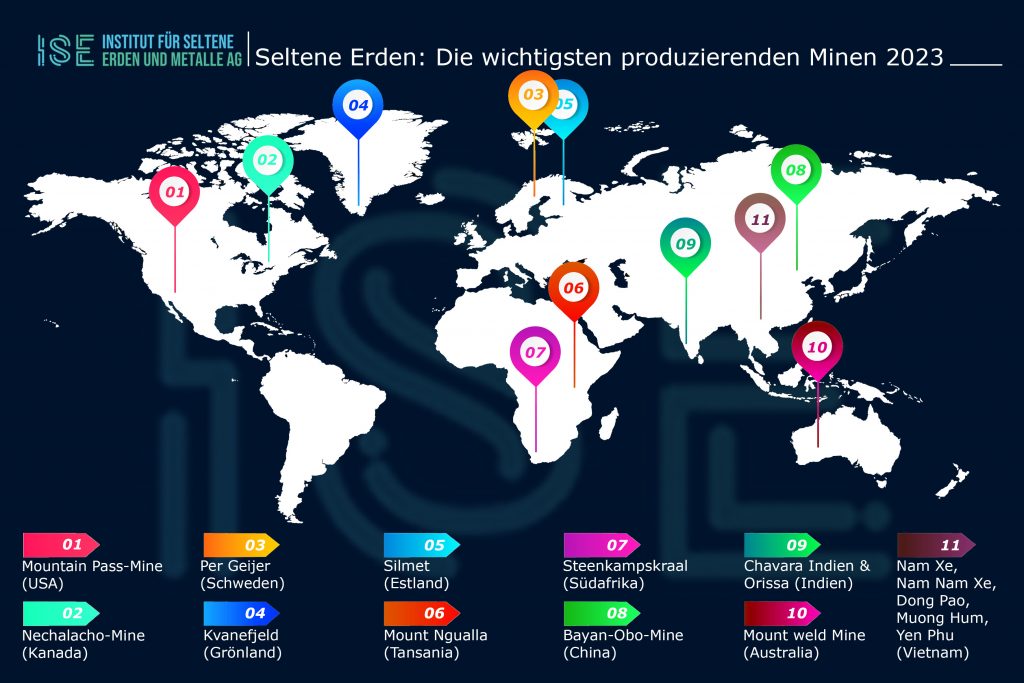 Rare earth (English: Rare earth) are an integral part of our everyday life. They are used in high-tech products as well as in the automotive industry, wind turbines and photovoltaics. The fabrics have extraordinary properties. With europium, for example, the red dye is produced in LCD screens. Neodymium enables the production of large permanent magnets that are installed in wind turbines. Experts estimate the global sales of the industries dependent on these metals to be 3,4 trillion euros annually. That's five percent of global gross domestic product.
Rare earth (English: Rare earth) are an integral part of our everyday life. They are used in high-tech products as well as in the automotive industry, wind turbines and photovoltaics. The fabrics have extraordinary properties. With europium, for example, the red dye is produced in LCD screens. Neodymium enables the production of large permanent magnets that are installed in wind turbines. Experts estimate the global sales of the industries dependent on these metals to be 3,4 trillion euros annually. That's five percent of global gross domestic product.
In recent years, rare earths have been used more and more in industry. Demand is already partly above the subsidized world market supply. Experts believe that demand will continue to increase in the future. One of the reasons is the continuing increase in importance of alternative energies and new traffic technologies. Until 2015, the demand for rare earths from 124 000 tons (2009) per year should rise to more than 200.000 tons. It has tripled in the past decade. The consequences are supply bottlenecks and significant price increases.
So far, there are only a few investment opportunities in rare earths. Unlike other commodities, the metals are not exchange traded and therefore there are no standardized futures contracts. As a result, no physically backed financial products are expected in the medium term. Investments are also not possible via the futures market. The easiest way for investors is to participate in mining companies. UBS is taking into account the growing interest of investors with its UBS STOXX Global Rare Earth ETF, Europe's first ETF on the rare earth sector. The ETF reflects the performance of companies outside China that earn at least 30% of their rare earth income. The exchange-traded index fund is passively managed and generates index-specific returns.

The ETF maps the barometer according to the physical replication method. This dispenses with the explicit use of swaps for index replication. UBS ETFs generally invest in the stocks included in the index. They are aiming for a full index replication. This means that the ETF holds each index title, and the weighting in the ETF equals the weighting of the title in the index. The decision whether to include a company in the index is made by the index provider - in this case STOXX Ltd. To be included in the STOXX Global Rare Earth Index, each title must meet certain requirements. The index provider STOXX has formulated a transparent set of rules for this purpose.
A risk-averse investor thus has another resource component to flexibly invest in the performance of non-Chinese companies that generate revenues from rare earths. The UBS ETFs are broadly diversified and offer the typical ETF benefits, such as efficient and cost-effective market access, easy and liquid exchange trading and high transparency. The UBS ETF on the STOXX Global Rare Earth Index is a UCITS IV index fund established under Luxembourg law. UBS Global Asset Management is responsible for the portfolio management of the ETFs and the fund administration is managed by State Street Bank in Luxembourg. This ETF is offered in two share classes that are open to all investors. Unit class "A" is aimed at private clients, while unit class "I" addresses the needs of institutional investors and high net worth private clients.
The most important companies in the index
STOXX Global Rare Earth Index currently consists of 13 companies. Almost 19% is the Australian company Lynas Corporation Ltd. most strongly represented. The mining company specializes in the prospecting and processing of rare earth minerals. Lynas's strategy is to provide a secure and reliable supply source directly from the mine to the customer (Branding Rare Earth Direct). In doing so, the company wants to become one of the world's largest producers and suppliers of rare earths. Its main mine, Mount Weld, is located in western Australia.
The only US and second largest company in the index is Molycorp Incorporation, located in Greenwood Village, Colorado. Your story begins shortly after the 2. World War when Bastnäsite was discovered in Mountain Pass. Even today, this mine is considered to be their most important source of income. Molycorp also owns subcontract Molycorp Silmet in Estonia, a producer of rare earth oxides and rare metals. In 2011, the company also acquired Santoku America Inc, a manufacturer of specialty metals and alloys. Molycorp is the only producer of rare earth oxides in the Western Hemisphere.
Neo Materials Technologies Inc is a Toronto-based Canadian company. The company's origins go back to 1993, when it entered into two Chinese joint ventures, acquiring shares in two existing rare earth plants. In 1997, she created a plant in Thailand for the production of "Neo Powder", a magnetic powder made from a neodymium-iron-boron alloy. Neo Materials Technologies owns a total of 19 systems in 10 different countries.
The main source of revenue for Avalon Rare Metals Inc is the Nachalacho Rare Earth Element Deposit Mine, which belongs to 100 percent of the Company. It is believed that rare earth deposits of the highest quality exist in this area. Four other plants within Canada are currently under preparation, three of which are at an advanced stage.
Alkane Resources is a mining company in Australia, which is involved in the extraction of rare earths and gold mining. Recently, the company discovered new high-concentration and near-surface gold occurrences within the Tomingley Gold Project.
Further information can be found on www.ubs.com/etf






